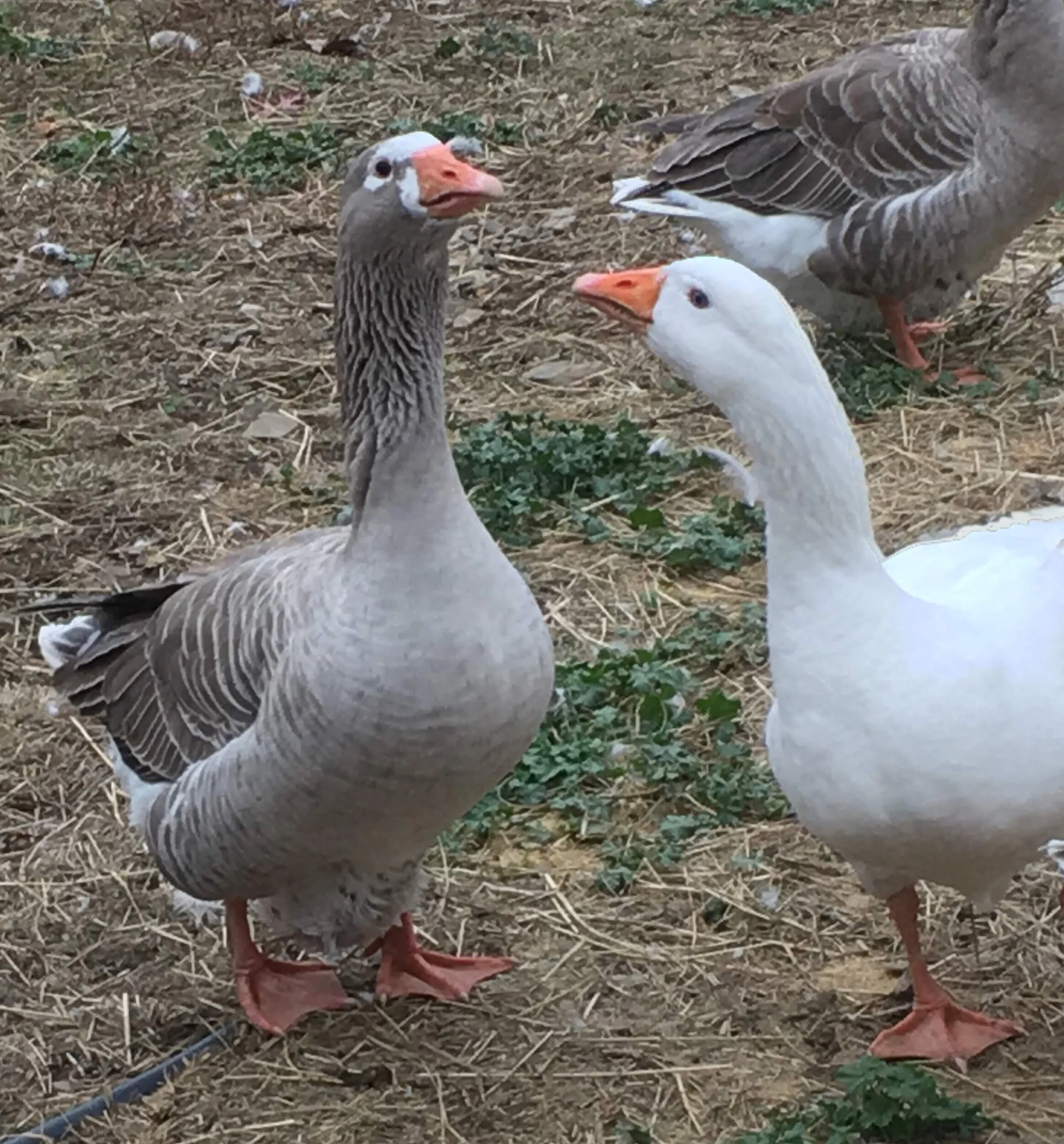I believe that geese, especially the Pilgrim goose breed, are a valuable asset on a farm or homestead.
Geese:
As small herbivores they can be sustained on smaller properties.
Because of their smaller size, they can be contained in a livestock panel paddock or moveable pasture pen as well as a large field.
With their strong flocking behavior, they are easily moved from paddock to paddock.
As long as they are protected from predators, winter shelter needs are minimal.
When pasture alone does not meet nutritional needs, whole grains or pelleted rations are easy to buy and store.
Adult geese readily adopt and raise incubator hatched goslings that have been slowly introduced to the flock.
For the table, they produce rich meat, high quality rendered fat and large eggs; eggs, feathers and down for home crafts; and manure for farmstead fertility.
PIlgrim Geese, in particular:
As an autosexing breed, from the time they are hatched the ganders and geese have different colored feathers and markings. There are no mysteries when selecting and managing grey geese and mostly white ganders for breeding groups.
PIlgrims are medium sized birds and do not require deep water for breeding. Although they do appreciate a trough of water for swimming, it is not essential for fertilization.
I have raised only Pilgrims, a few Toulouse and Embdens, and didn’t find one breed more vocal, aggressive or active than the other.
I have raised our birds as livestock, not pets. Brooding goslings in the barn, within sight of the adult goose flock, has bonded the goslings to the flock. My geese live behind fence, mostly, in an effort to protect the areas around the house from their manure, the landscaping and gardens from their appetites, the vehicle and trailer wiring from their incessant curiousity, and our visitors who are not experienced in moving around geese.
Pilgrim goose and gander

